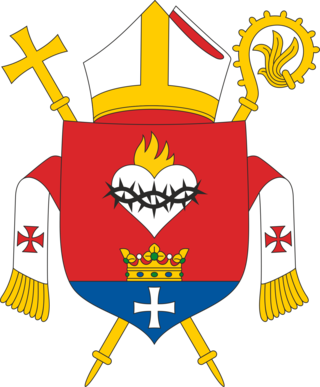
The islands which now form the Republic of Kiribati have been inhabited for at least seven hundred years, and possibly much longer. The initial Austronesian peoples’ population, which remains the overwhelming majority today, was visited by Polynesian and Melanesian invaders before the first European sailors visited the islands in the 17th century. For much of the subsequent period, the main island chain, the Gilbert Islands, was ruled as part of the British Empire. The country gained its independence in 1979 and has since been known as Kiribati.

The Gilbert Islands are a chain of sixteen atolls and coral islands in the Pacific Ocean, about halfway between Papua New Guinea and Hawaii. They constitute the main part of the nation of Kiribati.

The Gilbert and Ellice Islands in the Pacific Ocean were part of the British Empire from 1892 to 1976. They were a protectorate from 1892 to 12 January 1916, and then a colony until 1 January 1976. The history of the colony was mainly characterized by phosphate mining on Ocean Island. In October 1975, these islands were divided by force of law into two separate colonies, and they became independent nations shortly thereafter: the Ellice Islands became Tuvalu in 1978, and the Gilbert Islands became part of Kiribati in 1979.

The Catholic Church in Fiji is part of the worldwide Catholic Church, under the canonical authority and spiritual leadership of the Pope of Rome.

Nikunau is a low coral atoll in the Gilbert Islands that forms a council district of the Republic of Kiribati. It consists of two parts, with the larger in the northwest, joined by an isthmus about 150 metres (490 ft) wide.

Nonouti is an atoll and district of Kiribati. The atoll is located in the Southern Gilbert Islands, 38 km north of Tabiteuea, and 250 km south of Tarawa. The atoll is the third largest in the Gilbert Islands and is the island where the Roman Catholic religion was first established in Kiribati, in 1888.

The Roman CatholicDiocese of Tarawa and Nauru in Kiribati and Nauru is a suffragan diocese of the Archdiocese of Suva. It was erected as the Vicariate Apostolic of Gilbert Islands in 1897, with see in Tanaeang from 1936 to the end of 1950s, and later elevated to as the Diocese of Tarawa in 1966. There was a name change in 1978 and, in 1982, the diocese was split from the Mission sui iuris of Funafuti. The diocese currently has jurisdiction over all of Kiribati and Nauru.

The Mission Sui Iuris of Funafuti is a Catholic Latin mission sui juris in Tuvalu, Polynesia.

Christianity is the predominant religion in Kiribati, with Catholicism being its largest denomination.

The Catholic Church in Nauru is part of the worldwide Catholic Church, which, inspired by the life, death and teachings of Jesus Christ, and under the spiritual leadership of the Pope and Roman curia in the Vatican City is the largest Christian church in the world.

The Catholic Church in Kiribati is part of the worldwide Catholic Church, which, inspired by the life, death and teachings of Jesus Christ, and under the spiritual leadership of the Pope and Roman curia in the Vatican City is the largest Christian church in the world. Koru Tito is Bishop of Tarawa and Nauru, with see in Kiribati.
The Episcopal Conference of the Pacific (CEPAC) is the episcopal conference of the Catholic Church that includes the bishops of several islands in Oceania. The CEPAC is a member of the Federation of Catholic Bishops' Conferences of Oceania, FCBCO.

The Sacred Heart Cathedral is a religious building of the Catholic church that is located in South Tarawa on the atoll of Tarawa part of the island nation of Kiribati in Oceania.

The Our Lady of the Rosary Church also called the Catholic Church of Our Lady of the Rosary, is a religious building that is affiliated with the Catholic Church and is located in the town of Koinawa in east of the Atoll Abaiang, in the North of the Gilbert Islands in the country of Kiribati, Oceania.
Koru Tito was an I-Kiribati priest of the Roman Catholic Church who was appointed bishop of the Diocese of Tarawa and Nauru on 29 June 2020 but was not consecrated a bishop before his death.

The Japanese occupation of the Gilbert Islands was the period in the history of Kiribati between 1941 and 1945 when Imperial Japanese forces occupied the Gilbert Islands during World War II, in the Pacific War theatre.
Pierre Auguste Antoine Marie Guichet, MSC, MBE was the Catholic bishop of the Diocese of Tarawa from 1961 to 1978, when Paul Mea succeeded him.
Octave Marie Terrienne MSC was the Roman Catholic bishop of the apostolic vicariate of the Gilbert Islands from 1937 until 1961, when Pierre Guichet succeeded him.
Events in the year 2021 in Kiribati.











